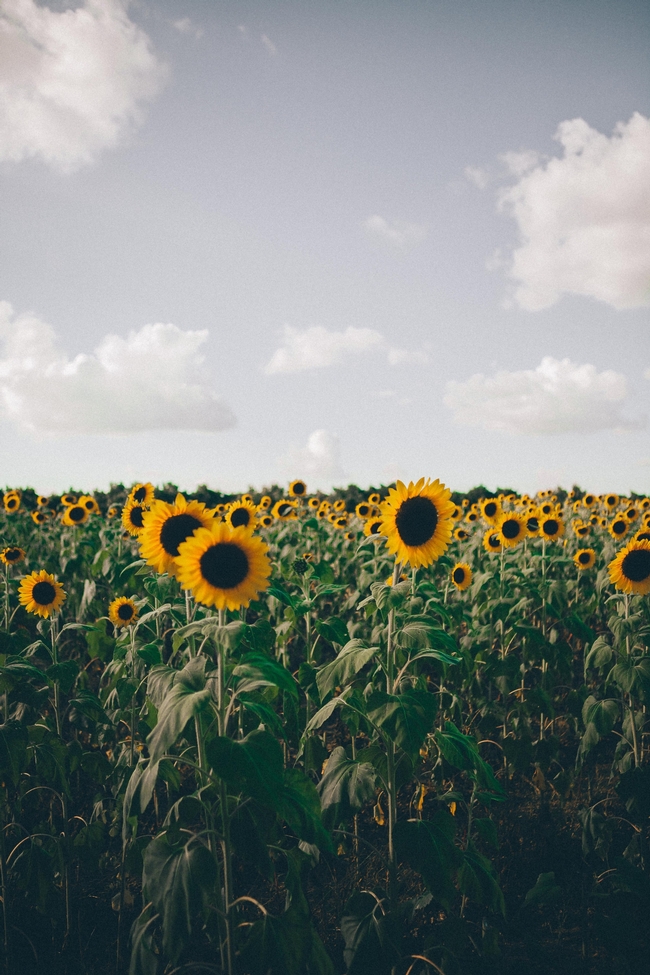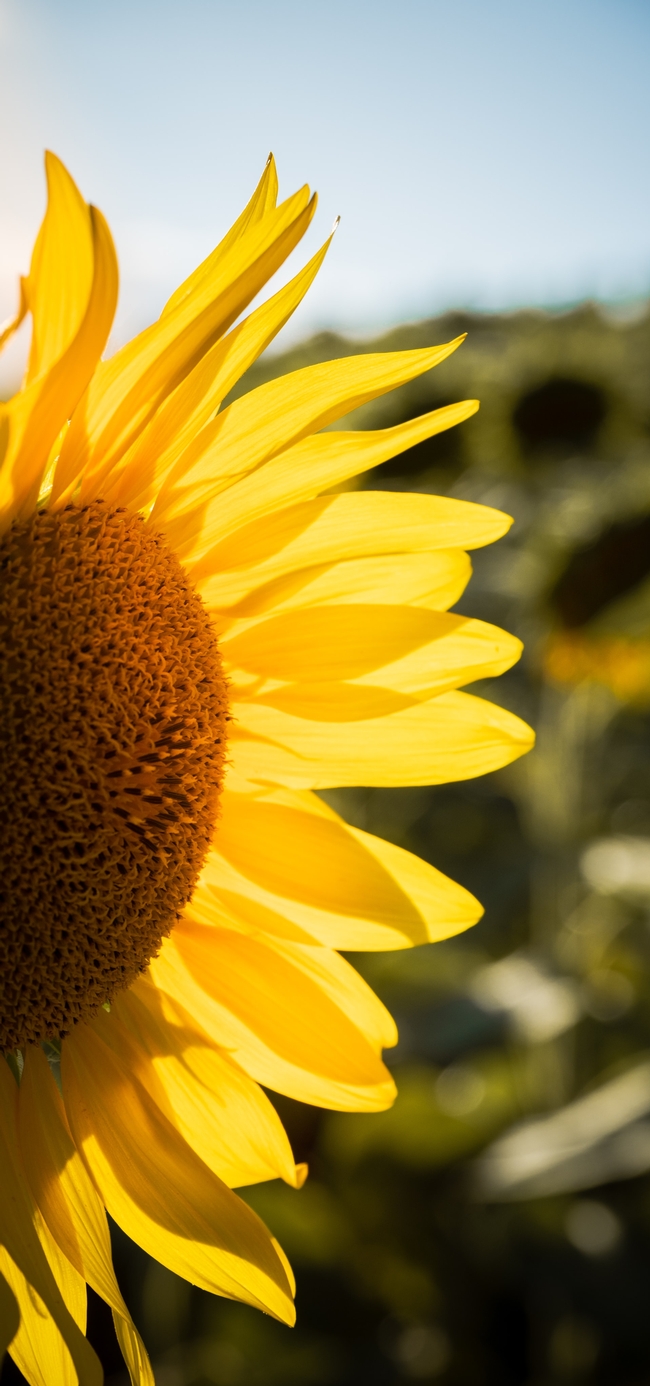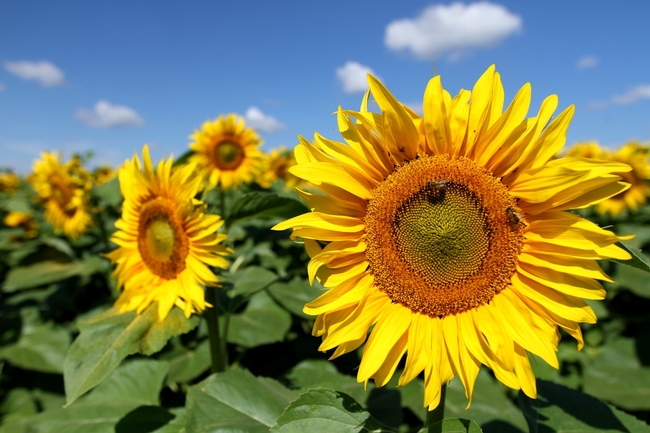By Julie Pramuk, UC Master Gardener of Napa County
At this time of year, you can spot sunflowers growing in many gardens and along roadsides in Napa Valley. Sunflower stems can grow nine feet tall, producing large. stunning flowers.
These cheerful plants have been cultivated in North America for centuries, used for food, medicine, dyes and oil. By 1500, the Spanish conquistadors had exported them to the rest of the world.
Last February, when I was planting sunflower seeds in my small cold frame, my granddaughter asked if she could have some of the seeds to plant. I was delighted and told her that it would be best to start the seeds in a bright inside spot so she could see them germinate, then plant them in her sunny back yard and keep them watered.
We both transplanted our seedlings in April. Mine, although healthy, were much slower growing. I noticed that the summer sun doesn't reach my garden until about 10 a.m. I also observed that, as my sunflowers grew, the heads all faced east as if waiting for the sun to come over the hill behind our garden. Then, as the sun progressed across the sky, the sunflower heads followed the path of the sun. As I watched my sunflowers each day, I wondered why and how this flower followed the sun.
Its Latin name, Helianthus, is rooted in two Greek words: helios, meaning sun, and anthos, meaning flower. In Italian, the word for sunflower is girasole, meaning to go around the sun.
In Greek mythology, the sunflower's origin is rooted in a love story. Apollo, also known as Helios, the sun god, was admired and loved by many, including a beautiful water nymph named Clytie. Every day she would follow his path across the sky from east to west.
Sadly, Apollo never returned her affection for he was in love with Daphne, daughter of a water god. Unfortunately for Apollo, Daphne did not love him. Clytie never gave up in her love for Apollo. So she became a sunflower following the path of the sun from the moment it rises in the east until it sets in the west.
Although this is a charming story of unrequited love, there is a reason why the sunflower turns its head toward the sun. Scientists say these young plants exhibit a trait known as heliotropism, or tracking the path of the sun. The phenomenon can be explained by circadian rhythms, the behavioral changes tied to an internal clock that we humans share, which follows a roughly 24-hour cycle.
The sunflower faces east at dawn and greets the sun, then slowly turns west as the sun moves across the sky. During the night the flower slowly turns back east to repeat the cycle.
Stacey Harmer, a professor of plant biology at UC Davis, told Science magazine that this behavior was a prime example of a plant's clock modulating its growth in a way that benefits the plant.
Researchers have found that the plant's turning is a result of different sides of the stem elongating at different times of the day. Growth rates on the east side of the plant are high during the day and low at night, whereas growth rates on the west side are low during the day and higher at night. Once a sunflower is mature, the circadian clock ensures that the plant reacts more strongly to early morning light than the afternoon or evening light as it gradually stops moving westward.
Research also reveals that east-facing flowers attract five times as many pollinators because the flowers heat up faster. Bees like warm flowers. Just like people, plants rely on daily rhythms to function.
Because of the sunflower's ability to attract pollinators, the sunflower was chosen for an experiment to see how the earth's pollinators are doing. The Great Sunflower Project is a fun, interactive family project that you can access online. Join other citizen scientists in helping scientists to evaluate and improve the habitat for pollinators. When you learn that one-third of our food depends on pollinators, you realize how important they are.
The sunflower is remarkable for its history, variety of flower heads, easy cultivation and vigorous bloom from early summer through fall as well as for its important role in attracting pollinators. Like Clytie, you may find yourself falling in unconditional love with this spectacular plant.
Food Growing Forum: Join Napa County Master Gardeners on Sunday, September 27, from 3 p.m. to 4 p.m., for a free Zoom forum on “Harvesting and Storing Produce.” This forum on food growing will continue monthly on the last Sunday of every month. To receive the Zoom link for the September 27 forum, register at http://ucanr.edu/FoodGrowingForum2020.
The UC Master Gardeners of Napa County are volunteers who provide University of California research-based information on home gardening. To find out more about home gardening or upcoming programs, visit the Master Gardener website (napamg.ucanr.edu). Our office is temporarily closed but we are answering questions remotely and by email. Send your gardening questions to mastergardeners@countyofnapa.org or leave a phone message at 707-253-4143 and a Master Gardener will respond shortly.


